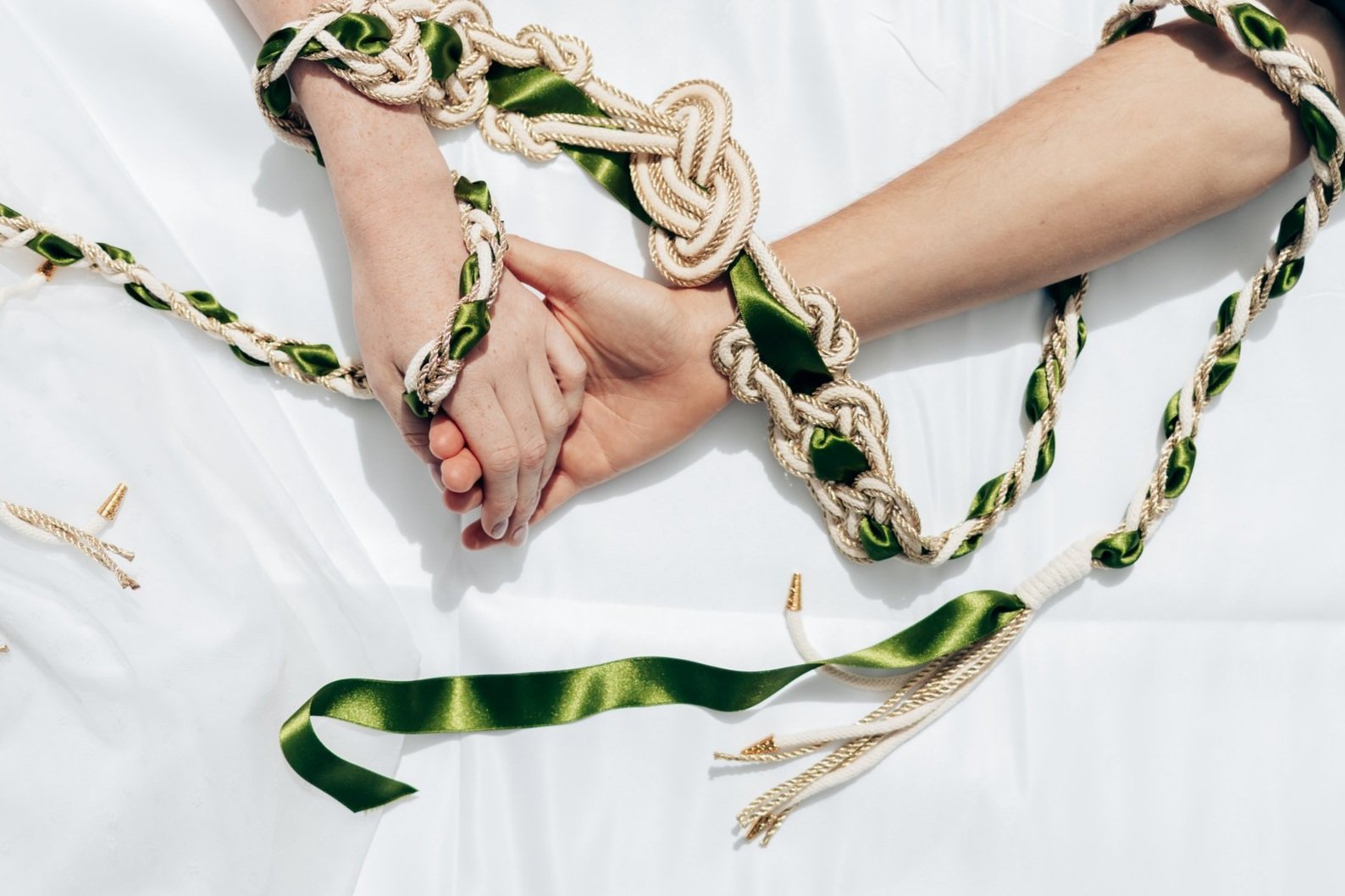What is the Tradition of Handfasting Cords?
If you’re planning a wedding or spiritual ceremony, you might have come across the term handfasting. But what exactly does this ancient ritual involve, and why are handfasting cords such an essential part of it? In this blog, we’ll explore the tradition of handfasting cords, their historical significance, and how you can use them to add a unique, meaningful touch to your special day.
What is Handfasting?
Handfasting is a beautiful, age-old tradition with roots in Celtic, Norse, and Pagan cultures. Often seen as an alternative or complement to a traditional wedding ceremony, handfasting symbolises the union of two people by literally tying their hands together with a cord or ribbon. The act represents the binding of two lives, hearts, and souls in a sacred vow of love and commitment.
Originally, handfasting was a way for couples to declare their intention to marry. It was often used as a "trial marriage" before the couple was officially wed in a church. However, today, handfasting has evolved into a powerful spiritual practice that is recognised in many wedding ceremonies worldwide.
The Significance of Handfasting Cords
Handfasting cords are the most important element in this ritual. Traditionally, these cords are made from various materials such as silk, cotton, or ribbon, and are often adorned with charms, beads, or other embellishments that hold personal significance for the couple. The choice of colors, materials, and symbols can reflect the couple’s heritage, beliefs, and unique love story.
The cord itself represents the ties that bind the couple, not only to each other but also to the wider universe. Each knot tied during the ceremony symbolises a different vow or promise, creating a literal and metaphorical bond between the two people.
How to Incorporate Handfasting Cords into Your Ceremony
If you’re considering incorporating handfasting into your wedding or commitment ceremony, the good news is that it can be completely customised to suit your personal style and beliefs. Here are a few ideas to make the ritual truly yours:
Choose Meaningful Colors: Select cords in colors that hold special meaning to you and your partner. Each color can represent a different aspect of your relationship.
Add Personal Touches: Consider adding charms, or sentimental fabrics, or even flora to the cords. These additions can represent shared experiences, values, or hopes for the future.
Include Your Loved Ones: Invite family members or friends to help tie the knots. This can symbolize the support and love that surrounds your union.
Write Your Own Vows: Use the handfasting ritual as an opportunity to exchange personalised vows. As each knot is tied, make a specific promise to your partner, adding depth and meaning to the ceremony.
Preserve Your Cord: After the ceremony, keep your handfasting cord as a cherished memento of your special day. Some couples choose to display it in their home within a shadow box or include it in a memory box.
Why Choose Anamchara Cords for Your Handfasting Ceremony?
At Anamchara Cords, we specialize in creating beautiful, custom-made handfasting cords that are as unique as your love story. Every cord is handmade with care, using high-quality materials and personalized to reflect your preferences and the spirit of your union. Whether you’re looking for a simple, elegant design or a richly embellished cord filled with meaning, we’re here to help bring your vision to life.
Make your ceremony unforgettable. Explore our collection of handfasting cords today!
Ready to Tie the Knot?
Handfasting is more than just a ceremony—it's a celebration of love, connection, and commitment. By incorporating handfasting cords, you can create a meaningful, memorable experience that reflects your unique journey as a couple.
Start your handfasting journey with us! Contact us to learn more about our custom handfasting cords and how we can help you make your day truly special.



